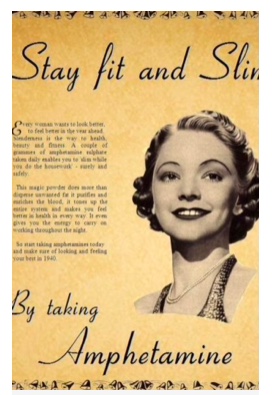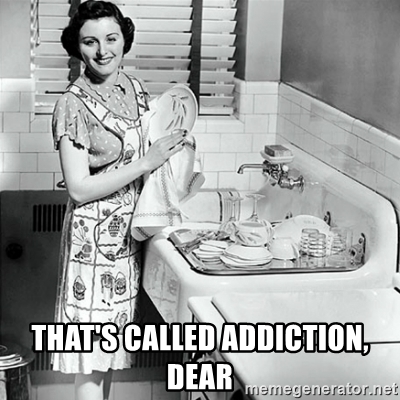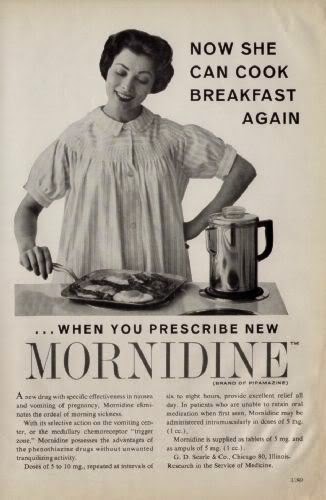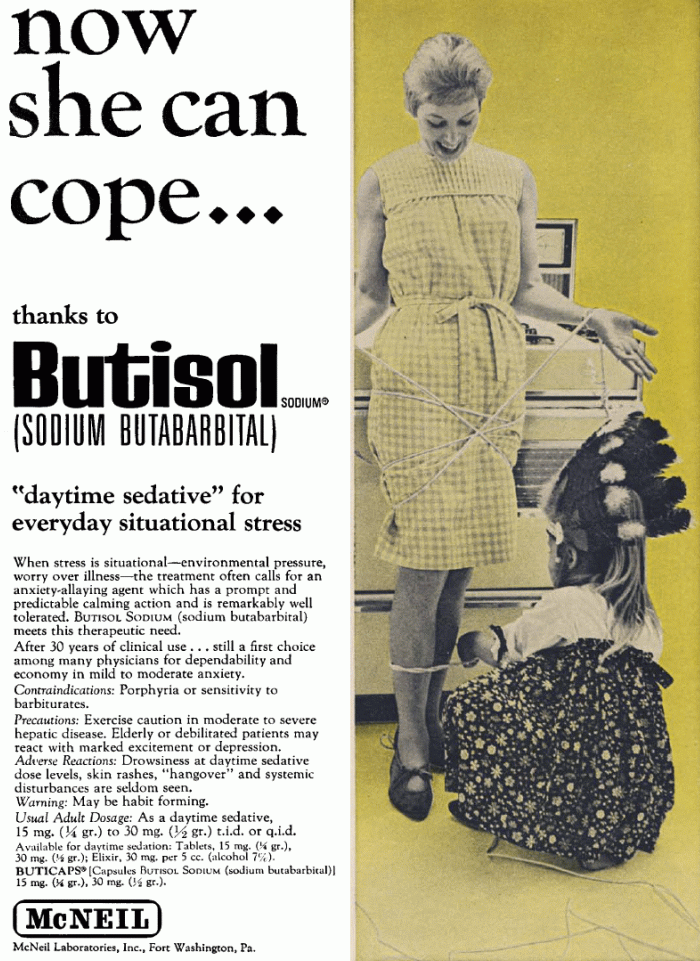The 1950s housewife of choice
Extremely productive, beautiful, and skinny, getting all their chores done in one simply day, just to then start over the next morning. In the times when there was no sign of dishwashers, washers and dryers, microwaves, instant ramen for lunch, or easy to use Swiffer Sweepers at all in a regular middle-class household.  The perfect women would still get all the work done around the house, take care of about 4-6 children, cook food for the whole family (with a dessert – daily), great their husbands nicely dressed and with a smile at the end of the day, then have a long night of sleep. All this, in the midst of the Cold War. Anything seems off? Well, it should, as explained by the perfect recipe of a ‘50s housewife: daily amphetamines and barbiturates.
The perfect women would still get all the work done around the house, take care of about 4-6 children, cook food for the whole family (with a dessert – daily), great their husbands nicely dressed and with a smile at the end of the day, then have a long night of sleep. All this, in the midst of the Cold War. Anything seems off? Well, it should, as explained by the perfect recipe of a ‘50s housewife: daily amphetamines and barbiturates.
“Mother’s Little Helpers”

Ah, the little pills to treat the pressure of womanhood. Back in the days potent pharmaceuticals were thought to be a woman’s best friend, helping them through all that came with the societal expectation of a perfect wife and mother. For those wishing to lose weight and be happier housewives, amphetamines were readily available. Along with general everyday tasks of life and prescriptions of all kinds of amphetamines came the “trendy anxiety”, treated by Valium, Librium, or the most popular of all: Miltown. Amphetamines, barbiturates, benzodiazepines, all of which were included in “mother’s little helpers”. Doctors would even prescribe a drug called Dexamyl, which was a blend of amphetamine and barbiturate sedative amobarbital (read more about drugs prescribed during these times).
The long days of getting exhausting chores done were assisted by glamorized amphetamines, then the stress along with war-anxiety was easily cured by heavy tranquilizers. Productive during the day, stress free and deeply sleeping at night, what could be the problem?

What exactly is classified as addiction and how does it affect your brain?
Addiction is one of many very complex conditions that have impacted our society in negative ways. According to the American Psychiatric Association, addiction is a condition in which there is an uncontrolled use of substance despite harmful consequence, where the person’s ability to function in day to day life becomes impaired. Substances, or drugs, are not the only thing people can be addicted to, as one might develop an addiction to certain behaviors. Such behaviors are gambling, or shopping. People suffering from addiction may have distorted and intense behaviors, as well as thoughts. Research has directed most of our attention to the Mesolimbic Dopamine Pathway when it comes to affected areas in the brain. Some of the very important structures in this pathway are the ventral tegmental area (VTA), and the nucleus accumbens (NAc). Repeated use of substances and long-term addiction may lead to permanent neurological changes.
What happens after repeated exposure

- excess delta-FosB in the brain leading to the increased effect of reward by helping to form new synapsis
- memory forming structures become impaired , such as the hippocampus an
d amygdala - CREB, which is a transcription factor, is responsible for negative behavior reinforcement, as it regulates negative symptoms
- lack of adequate BDNF, or an increase of its signaling in the brain

See more vintage drug ads from the 1950s.
Sources:
https://www.ncbi.nlm.nih.gov/pmc/articles/PMC3898681/
https://www.goretro.com/2014/08/mothers-little-helper-vintage-drug-ads.html